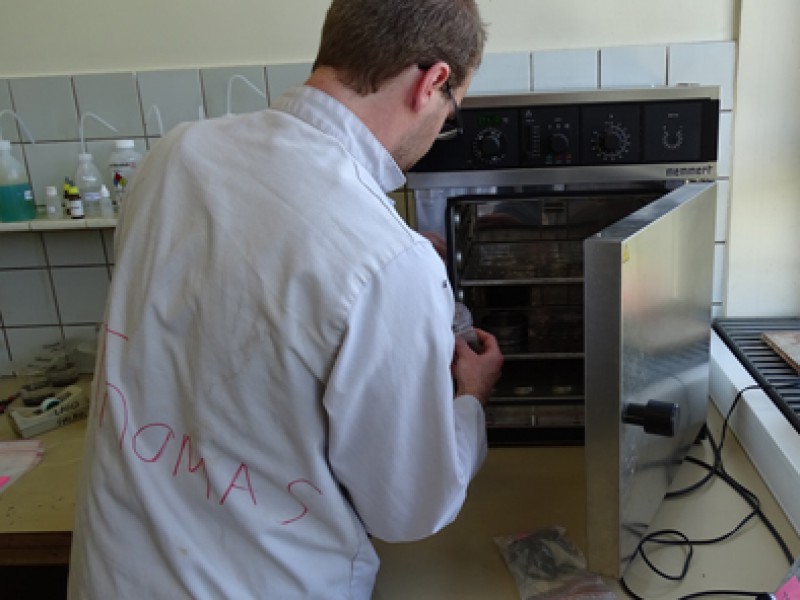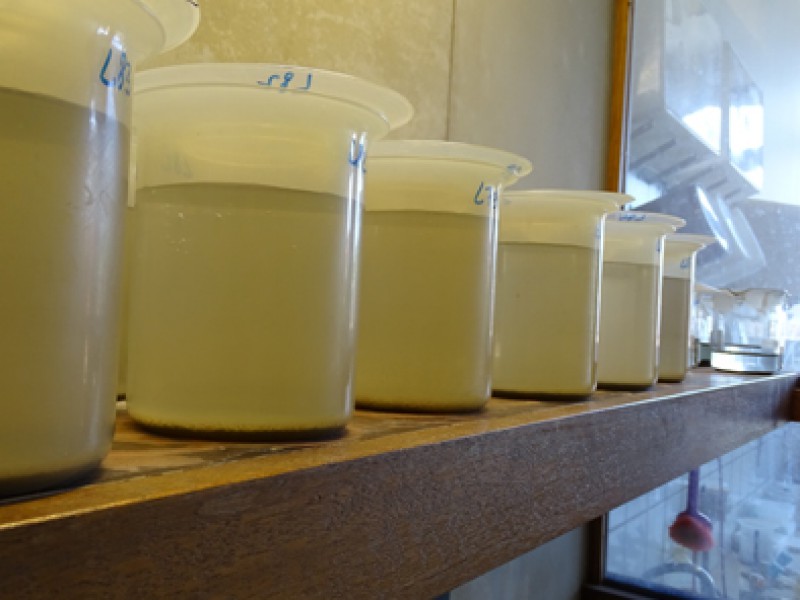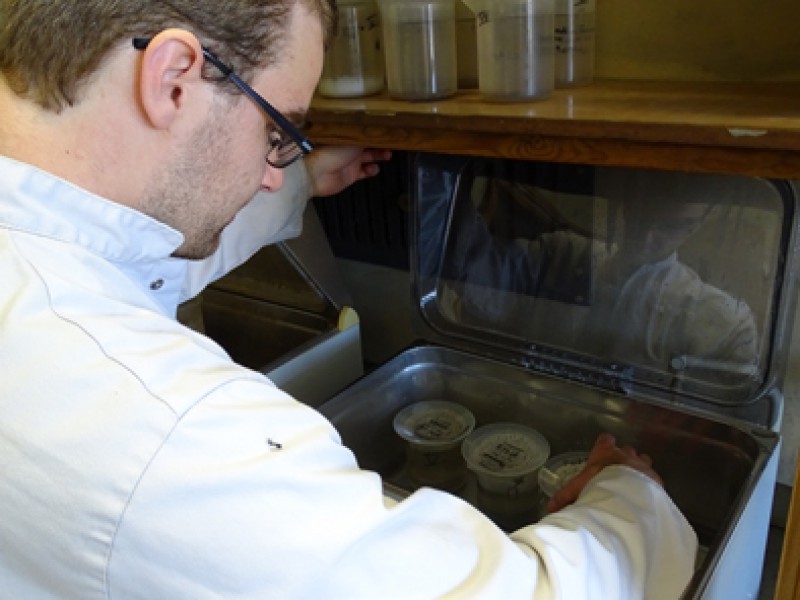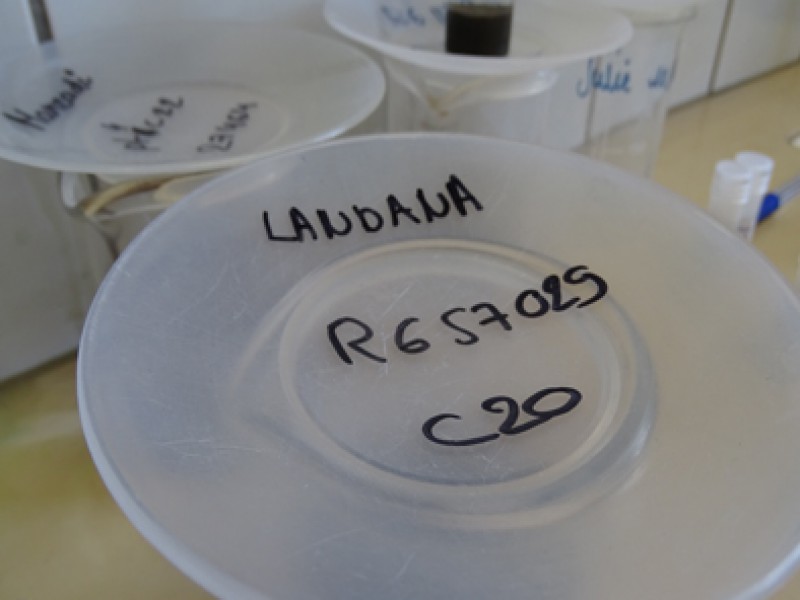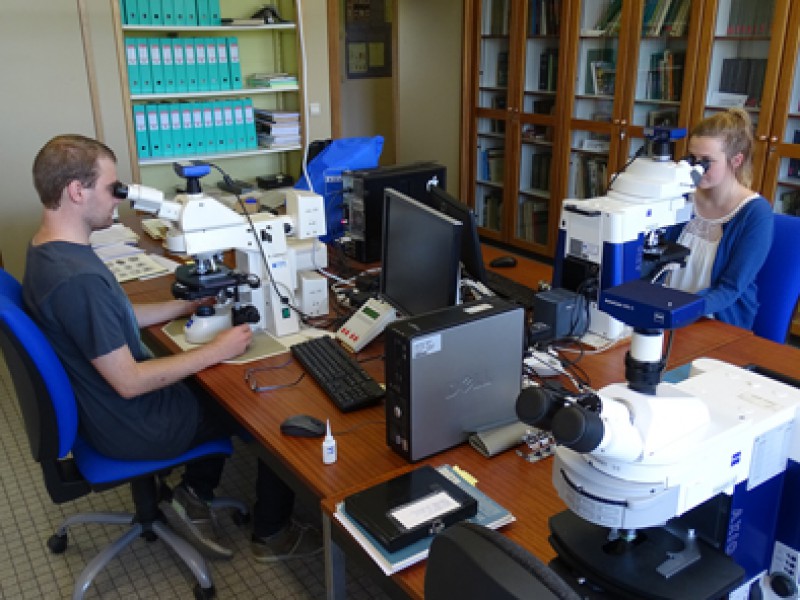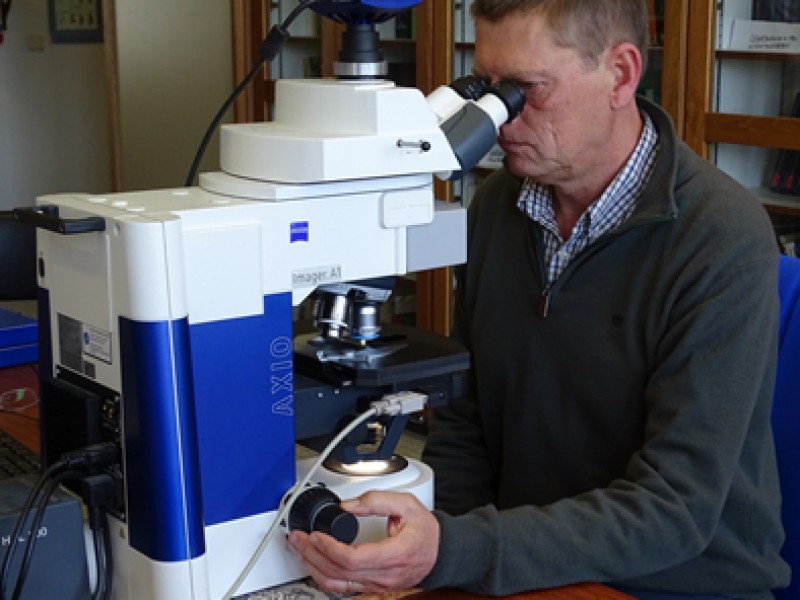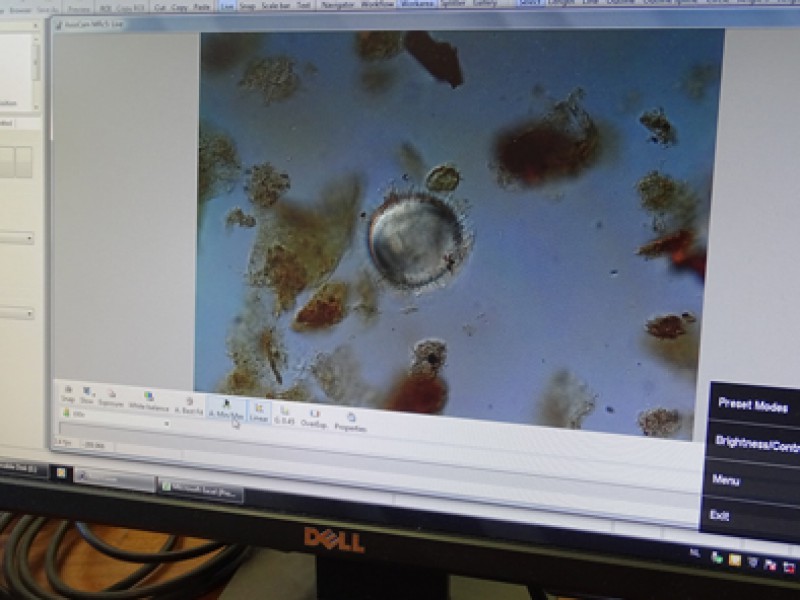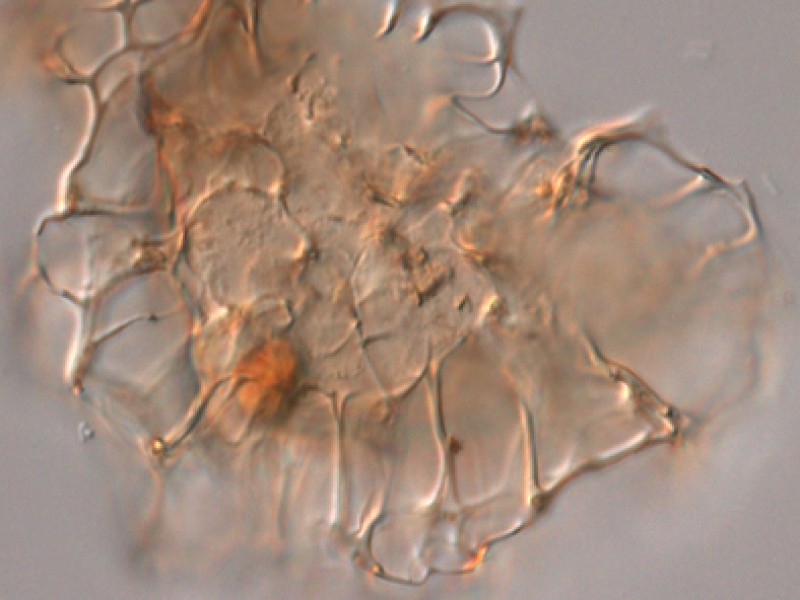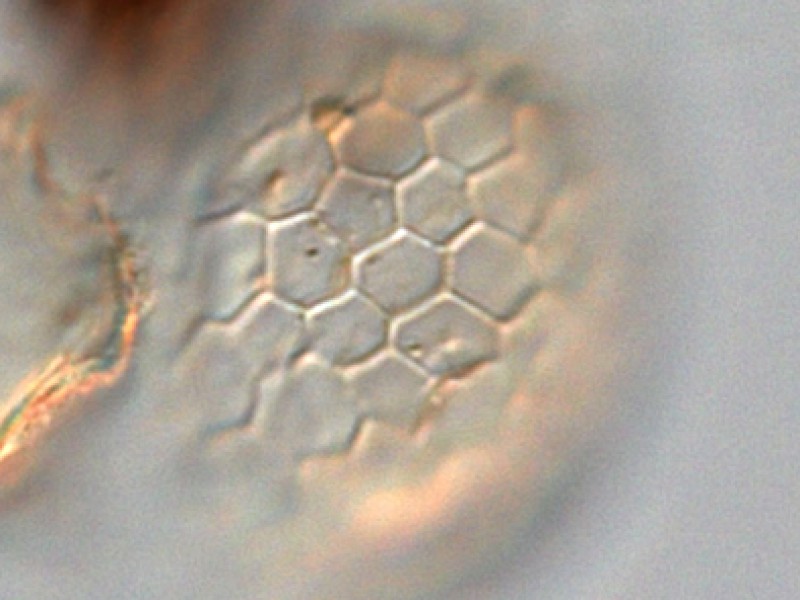Dinoflagellate cysts are marine palynomorphs that are frequently used for high-resolution biostratigraphical studies; their resting cysts, evolve rapidly, abound in marine sediments and some are cosmopolitan. The Paleocene–Eocene outcrops of Cabinda (Angola), Boma (DRCongo), and Vastan (Gujarat, India) will be analysed biostratigraphically, in order to elaborate a detailed, high-resolution depositional model. The extraction of the organic material from the sediments involves repeated treatment cycles with acids for the removal of carbonates and silicates. The organic residues are mounted on glass microscope slides and studied with a transmitted light microscope under high magnification (200x to 1000x). Other marine palynomorphs (acritarchs, single-celled green algae) and pollen and spores are also studied since they provide valuable paleoenvironmental information (sea surface temperature, distance to the coast, sea surface salinity, degree of trophication).Palynological analysis performed at the Research Unit Palaeontology of Ghent University

